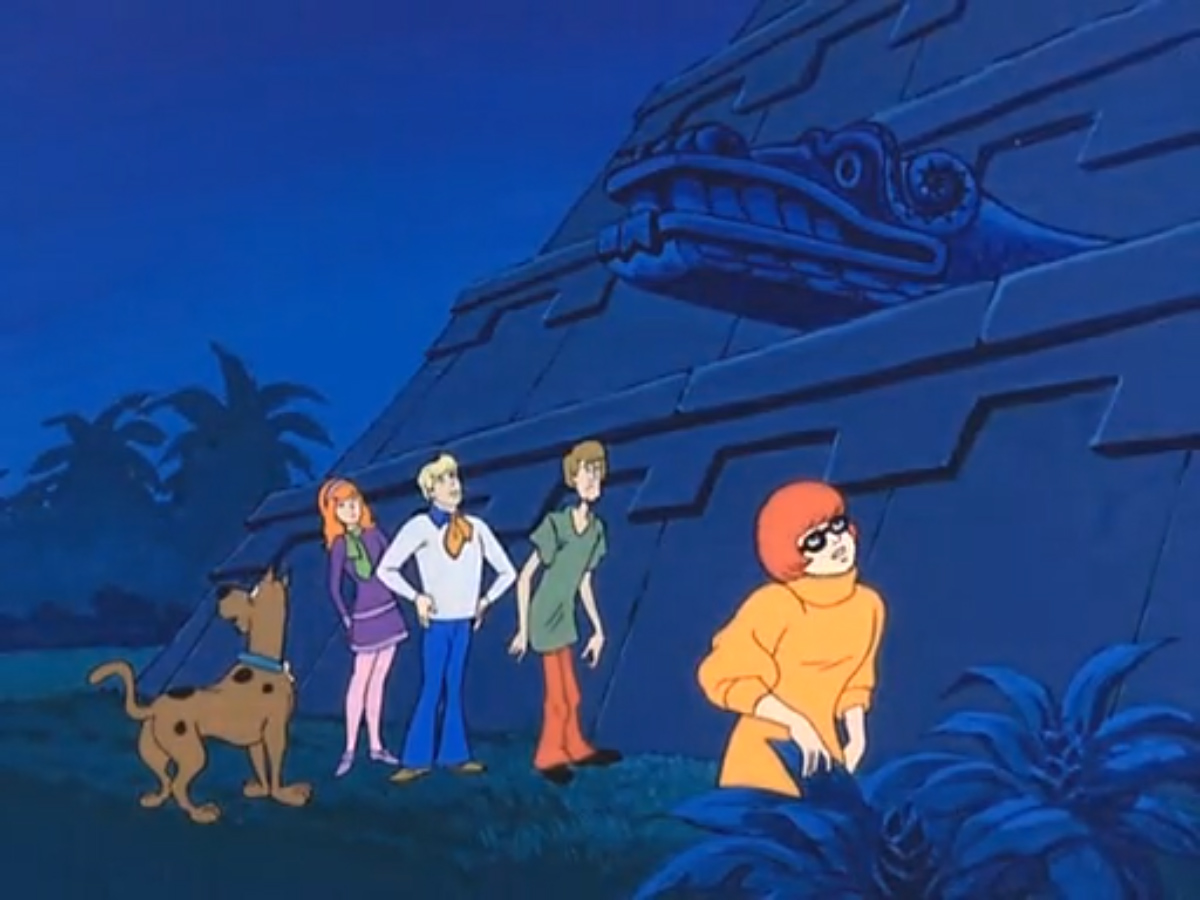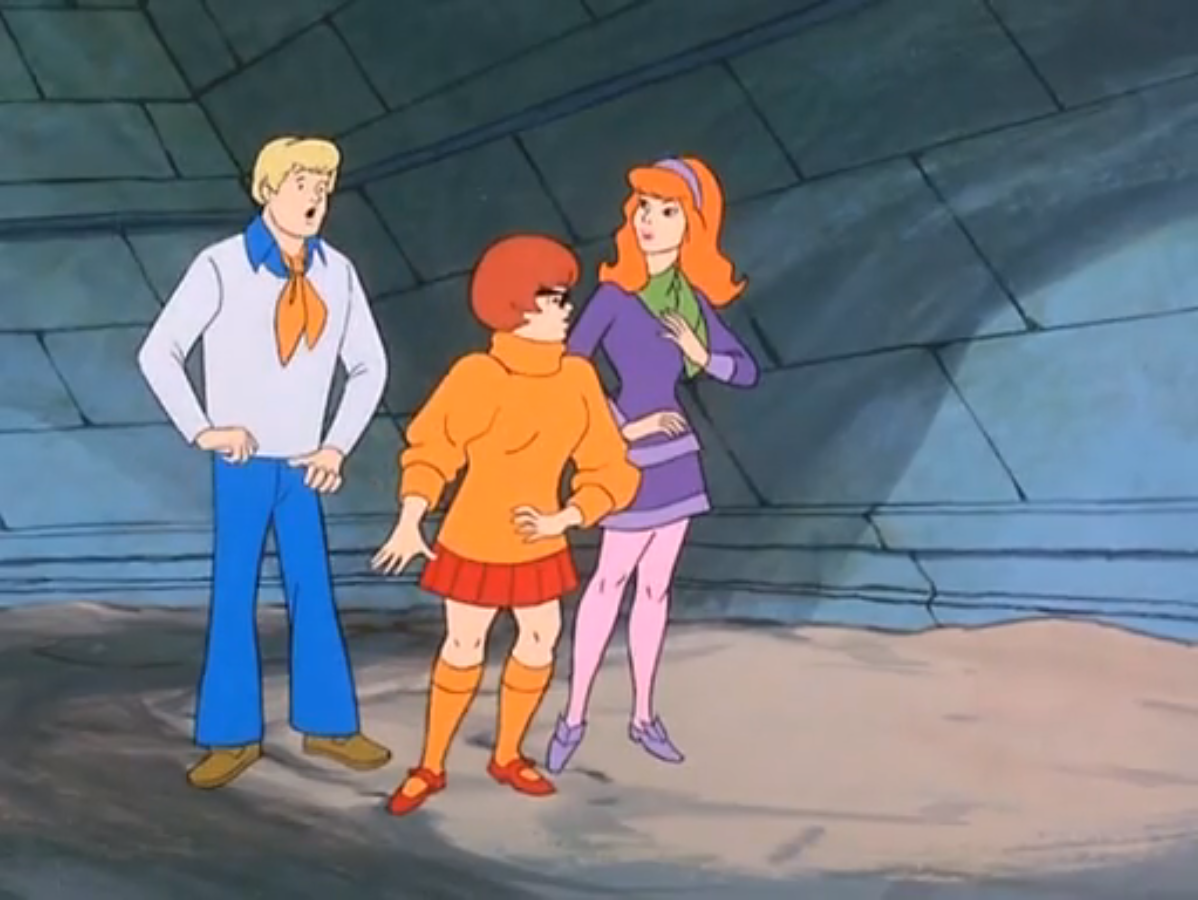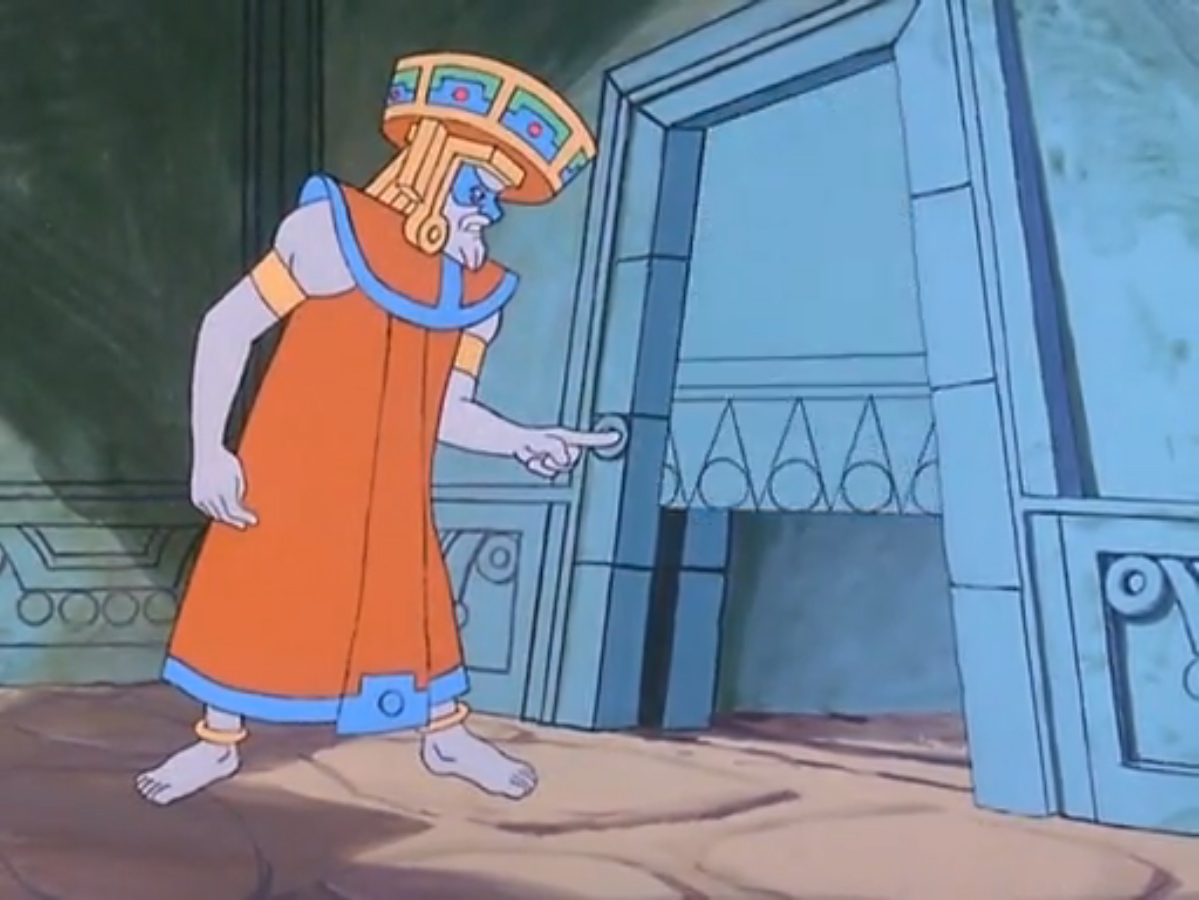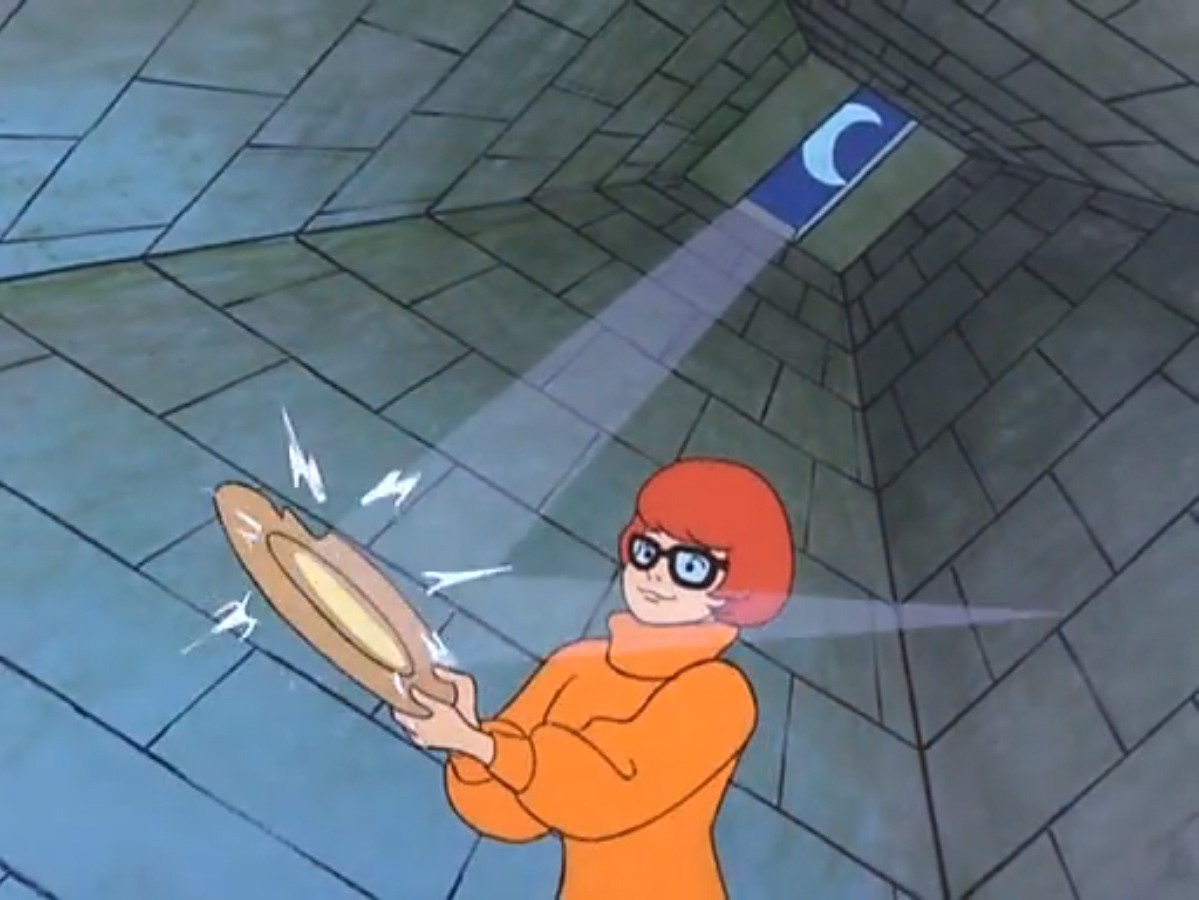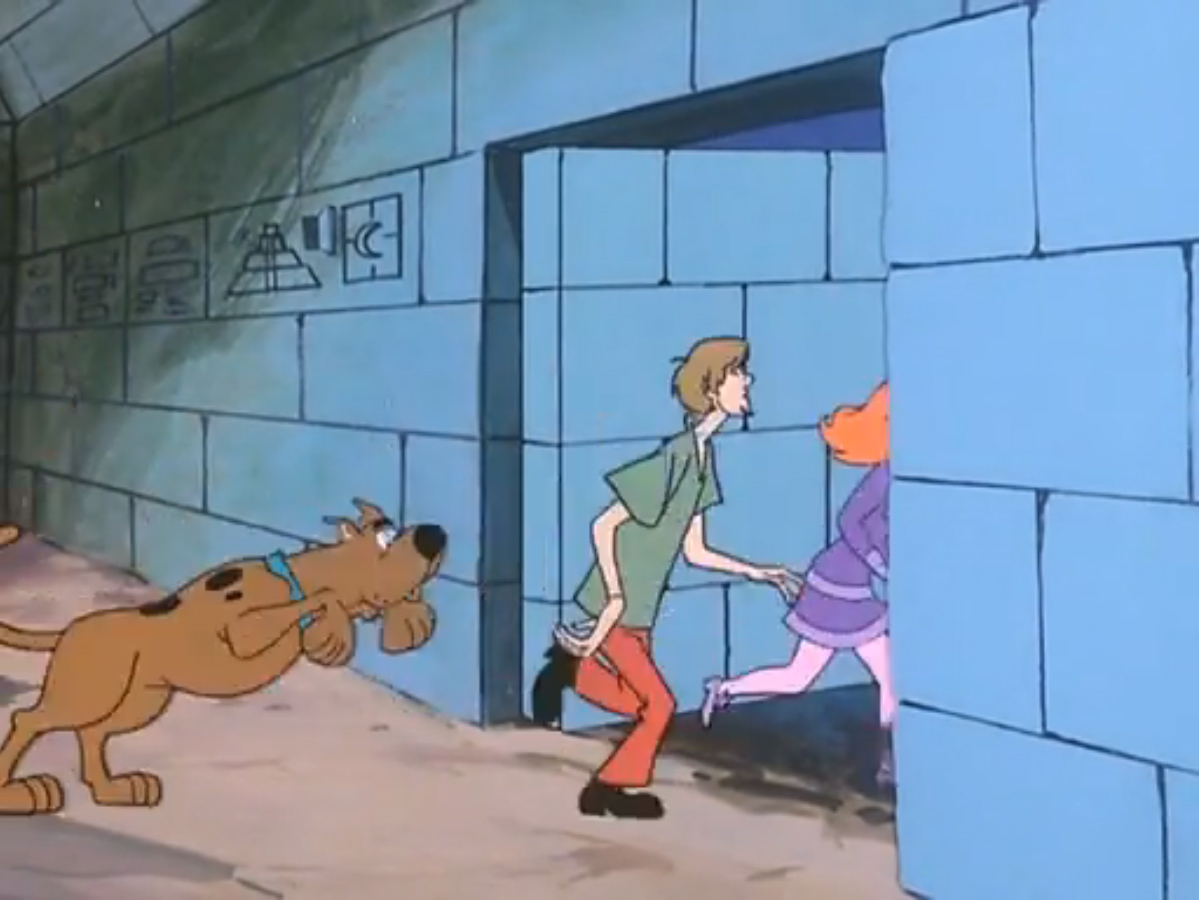The hollow pyramid in which much of the second half of “The Fiesta Host Is an Aztec Ghost” takes place has no basis in Pre-Columbian architecture. As such, this space––and the fantastical features that comprise it––presents a projected characterization of the Aztec culture ripe for analysis. Far from being an original to this cartoon, the hollow pyramid existed in popular conception for at least a generation prior to its appearance in Scooby-Doo, and has persisted up to the present day. In this sense, it can be considered a recurring trope in the representation of the archaeological past, both Egyptological and Pre-Columbian, and its inclusion in this cartoon is exemplary. Perhaps its persistence reflects a modern bias about the purpose of architectural structures as enclosures of interior spaces that are intended to be accessed repeatedly. But I suspect the main impetus for the initial imagining of such spaces––and the reason for their continued appeal––comes from the exigencies of cinematic narrative, wherein sufficiently moody, mysterious, and––most importantly––spacious settings were required within which action can take place.
Most Mesoamerican pyramids were actually large, solid platforms supporting temple structures with relatively small chambers at their summits. They were often explicitly conceived of as man-made mountains, and their great mass can be understood as an expression of community in terms of both the way their monumental presence anchors space and as a concrete expression the labor necessary to construct them. When they did contain burial chambers, these were typically extremely small rooms that were either made to be inaccessible or that were entered through very narrow passages through which a person had to stoop or crawl. By contrast, when the gang from Scooby-Doo enters the pyramid, which they do through a secret door in the base that Shaggy leans against by chance, the entire massive structure is shown to be a shell whose exterior surfaces correspond to the inward-sloping walls of the interior.
